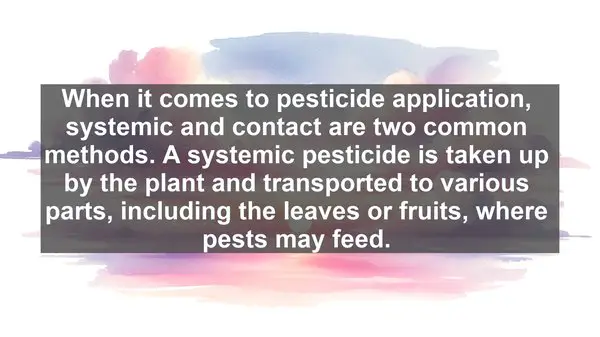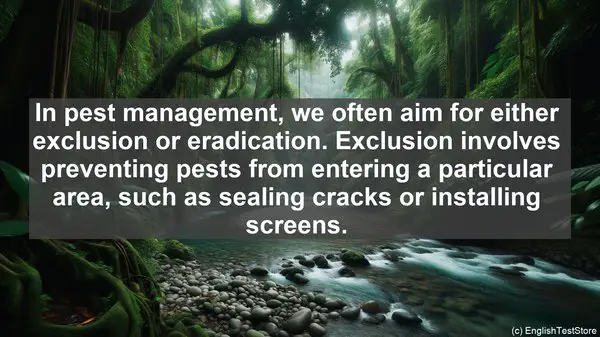Introduction: The Importance of Language in Pest Management
Welcome to today’s lesson on Integrated Pest Management. While we often focus on the practical aspects, the role of language should not be underestimated. Misunderstanding a word can lead to incorrect actions and ineffective pest control. Today, we’ll explore 10 such words that are commonly confused. Let’s get started!

1. Infestation vs. Infection
Infestation refers to the presence of a large number of pests, such as insects or rodents, in an area. On the other hand, infection is the invasion and multiplication of disease-causing organisms, like bacteria or fungi. While both are undesirable, the methods to tackle them differ. For infestations, physical barriers or traps may be effective, while infections often require targeted treatments like fungicides or antibiotics.
2. Resistant vs. Tolerant
When we talk about pests, resistance and tolerance are two important concepts. Resistance refers to a pest’s ability to withstand a particular control method, such as a pesticide. Tolerance, on the other hand, means the ability of a plant or crop to endure pest damage without significant yield loss. Understanding whether a pest is resistant or a crop is tolerant helps in choosing the most appropriate management strategy.
3. Bait vs. Lure
Baits and lures are commonly used in pest control, but they serve different purposes. A bait is a substance that attracts pests and is often combined with a toxicant to control their population. On the other hand, a lure is used to attract pests for monitoring purposes, without any toxic component. Knowing when to use a bait or a lure is crucial for effective pest surveillance and control.

4. Active Ingredient vs. Inert Ingredient
When we read the label of a pesticide, we often come across these terms. An active ingredient is the component responsible for the pesticide’s pesticidal activity. Inert ingredients, on the other hand, are substances that are added to the formulation to enhance stability, spreadability, or other properties. While the active ingredient is the key player, the inert ingredients also play a role in the overall effectiveness of the product.
5. Exclusion vs. Eradication
In pest management, we often aim for either exclusion or eradication. Exclusion involves preventing pests from entering a particular area, such as sealing cracks or installing screens. Eradication, on the other hand, means completely eliminating the pest population from an area. While exclusion is often more feasible and sustainable, eradication may be necessary in certain situations, such as when dealing with invasive species.
6. Pheromone vs. Hormone
Pheromones and hormones are chemical messengers in the insect world, but they serve different purposes. Pheromones are used for communication between individuals of the same species, such as attracting mates or marking trails. Hormones, on the other hand, regulate various physiological processes within an individual insect. Understanding the role of these chemicals helps in developing targeted pest control strategies.
7. Systemic vs. Contact
When it comes to pesticide application, systemic and contact are two common methods. A systemic pesticide is taken up by the plant and transported to various parts, including the leaves or fruits, where pests may feed. In contrast, a contact pesticide acts only on the surface it is applied to. Choosing the right type of pesticide depends on factors like the pest’s feeding behavior and the stage of the crop.
8. Larva vs. Nymph
Both larvae and nymphs are immature stages of insects, but they are specific to certain groups. Larvae are the immature stages of insects like beetles or butterflies, while nymphs are the immature stages of insects like grasshoppers or bugs. Recognizing whether you’re dealing with a larva or a nymph is important, as their biology and control methods may differ.
9. Persistence vs. Residual
When we talk about the longevity of a pesticide’s effect, persistence and residual are two terms that come up. Persistence refers to how long a pesticide remains active in the environment, while residual refers to how long it continues to be effective against pests. Understanding the persistence and residual properties of a pesticide is crucial for determining the frequency of application and potential environmental impacts.
10. Threshold vs. Economic Injury Level
In pest management, setting thresholds is important to determine when action needs to be taken. A threshold is the pest population level at which control measures should be initiated to prevent economic damage. The economic injury level, on the other hand, is the pest population level at which the cost of control measures is justified by the potential damage. Balancing these two levels is crucial for cost-effective pest management.
